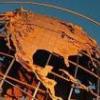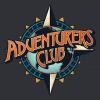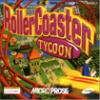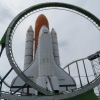RCT Discussion / How to plan a park...
-
 22-August 09
22-August 09
-

 Comet
Offline
^Yeah same with me. I'm using plans for a lot of Clouds Rest and get new ideas for the areas every day
Comet
Offline
^Yeah same with me. I'm using plans for a lot of Clouds Rest and get new ideas for the areas every day
Planning is the reason Bayside is still so unfinished because I just built as I went with only a basic idea and that didn't work out too well. -

 In:Cities
Offline
In:Cities
Offline
Half true... It ends up as finished sometimes, but in that case it takes a lot longer.
well.... i didnt really plan out Ivalice, and i finished it.
aaand, it was finished in two months:]
lol but then again, i had everything planned out in my head, so i guess maybe that doesnt count.
i just didnt physically write anything down on paper haha -

 Six Frags
Offline
Six Frags
Offline
I didn't know about that site, but now I doOne tool I find really helpful is Wikimedia Commons, which has tons of photos for research.

Thanks man, great site, with tons of info and photo's.. Really helps with the park construction..
SF -

 Dark_Horse
Offline
Does anyone ever use ratios for like shows/rides, coasters/flatrides, restaurants & shops/attraction? I try to have at least one show per 5-6 rides.
Dark_Horse
Offline
Does anyone ever use ratios for like shows/rides, coasters/flatrides, restaurants & shops/attraction? I try to have at least one show per 5-6 rides. -

 Comet
Offline
^Just for bathrooms and coasters really
Comet
Offline
^Just for bathrooms and coasters really
Based off the size and layout of the park I always know how many coasters and bathrooms I'm going to have -

 Nitrous Oxide
Offline
I really don't see the point of bumping a 2 year old topic and closing mine... but whatever.
Nitrous Oxide
Offline
I really don't see the point of bumping a 2 year old topic and closing mine... but whatever. -

 CedarPoint6
Offline
I know this is an older topic, but I saw it linked from NO's one. Here's some thoughts of mine for how I plan-- maybe it'll be useful for some! Here's how I planned SeaWorld.
CedarPoint6
Offline
I know this is an older topic, but I saw it linked from NO's one. Here's some thoughts of mine for how I plan-- maybe it'll be useful for some! Here's how I planned SeaWorld.
1. Figure out what you want.
I made a Word Document. A big word document. I like to plan things out fully, so I just started typing about everything. I figured out the areas, then put attractions, restaurants, shops, exhibits, stands, stalls, infrastructure, etc. sorted by the area. When I didn't know anything more about it, I used placeholders.
2. Research.
I did a lot of research for this park. Weeks of research. For a realistic park history is your friend. It doesn't matter if what used to be there is no longer there in your park, it still determines how things will lay out. All your oldest attractions will not all be the farthest from the gate. The general layout of the paths won't change over the years. So it's something to consider as you go on with building. What remnants of what used to be there inform what's there now. Research also goes to your intended themes and attractions. a] do they fit your theme? b] does it fit your park type? For me, it was a matter of does it fit what a real SeaWorld park would do. c] does your theme fit your ride. You wouldn't have a wooden coaster called Manta... it all takes thought.
I looked up what was at all 3 SeaWorld parks (and what was at Ohio), how the things looked, proposed attractions, cancelled attractions, past attractions, rumored attractions, all to learn how to think like someone building a SeaWorld park. Research is the most important planning step to me.
3. Mark it out
On your map, mark out where the stuff will go in general. I use purple grid for paths, yellow for rides, ice for lakes, and various others in there when I need them. It doesn't have to be extensive. Just an idea of your most generic park layout. Have a basis. I used Orlando's park as my basis. It will have a lake and a figure 8 layout at it's core. Don't copy your basis. I mirrored SWO's layout and changed the location of various things-- all based on my research. Make it believable, but don't copy. Mirroring is an easy way to make you think about where stuff goes later in your park build. It's ok if it looks very similar as long as you can explain it.
TIP: Every single object you place (and I mean EVERY one) should have a reason. For me, if I can't tell you why that specific bush is placed where it is, I haven't thought it out enough.
4. Start with something fun. [don't start with an entrance]
Entrances will kill a park. Points to you if you can start there, but I can't. I always start a park with a coaster. WWAP was Fusion, SFC was Bizarro, SW is Manta. Coasters are fun, and take up a lot of space, helping with the idea of completion. If it looks like there's stuff laid down over a larger area it gives you motivation. You need enough motivation to jump the honeymoon phase of a park idea and get into the grunt work. When you build, many of your ideas and visions in your head will inevitably turn out to suck, look terrible, or just not work altogether. You need enough done before you get there to convince yourself this park is worth finishing. If you start with something fun, you'll enjoy building it and you'll get your park a lot further.
5. Build out.
Work from your first build and spread out. In the case of Manta, it was marking out the station and aquarium and building a path. I picked the Wing Dip as the focal point of the ride and developed the path there. Then I worked my way out. For mine, I built over to dolphin cove, then to whale and dolphin stadium, then towards the park entrance. Working outward helps to make sure you don't have awkward gaps. You'll have to jump eventually, though, so that's where you go marking again. Fine tune the markings to the space you have, since I guarantee the markings won't be like they were when you first put them down.
6. Consider everything.
If you're building for realism, this is extremely important. Here was my latest consideration for laying out about 1/4 of the park. On my original Word document, I found that I wanted Journey to Atlantis, Kraken, Sea Lion and Otter stadium, Pacific Point Preserve (sea lion exhibit), rapids ride, penguin encounter (and Antarctica area), seaport pizza and about 5 little shops all in my open area between Whale and Dolphin Stadium and where Sea Lion stadium was to go. Here's how I figured it out.
- W&D and SL&O Stadiums were original park structures. It's most important that stuff get's build around that and not the other way around.
- The path between these two wouldn't have changed much over the years, so the general layout should make sense.
- Sea Lion exhibit should border SL&O Stadium because the support areas should be common as that would be the best from an infrastructure standpoint.
- If the rapids is to interact with the sea lion exhibit it needs to wrap that area. Therefore the rest of the rapids must go close by. I need to leave space for a queue line, station, interaction areas, and retention pond.
- The penguin encounter and sea lion exhibits need to border back of house (behind the scenes) areas. These areas all need extensive life support systems and the closer you can get those to the exhibit, the cheaper it would be.
- The pathways will be most congested around the stadium and ride entry/exits, so they should be widest there. Extensive curves and extra paths are confusing. It needs to be simple.
- There shouldn't be too long of a section of path without something to buy, eat, see, or ride. So that's where the word document comes into play, pulling off what you wrote in there to plug into the park.
It's all about considering what you want and what you have to make them work together.
7. Improvise.
It's not going to all work out right, but be willing to change your plans midway, as long as you have a good reason too. Try to never love something enough that you'll completely refuse to change it if there's a reason. You CAN change your plans midway through-- it's ok! But the reason you plan to begin with is to get direction. If you get a good start heading in a certain way, you'll be good as you continue to build, even if there are changes. Ideas grow and mold as you build and sometimes you'll develop much better stuff from working on a first idea.
Hopefully this is useful for somebody-- I just thought I'd write down the various thoughts I've been dealing with as I've been building lately! -

 Nitrous Oxide
Offline
^ Very useful. For me I always felt like I had to start with the parking lot and entrance and move on from there. But starting with things that will motivate you to continue is a great idea.. I notice that 90% of the parks I finished were started like that. It's very hard to start with an entrance when you have nothing else built. It's like trying to come up with an album cover and title before writing any music to it.
Nitrous Oxide
Offline
^ Very useful. For me I always felt like I had to start with the parking lot and entrance and move on from there. But starting with things that will motivate you to continue is a great idea.. I notice that 90% of the parks I finished were started like that. It's very hard to start with an entrance when you have nothing else built. It's like trying to come up with an album cover and title before writing any music to it.
 Tags
Tags
- No Tags